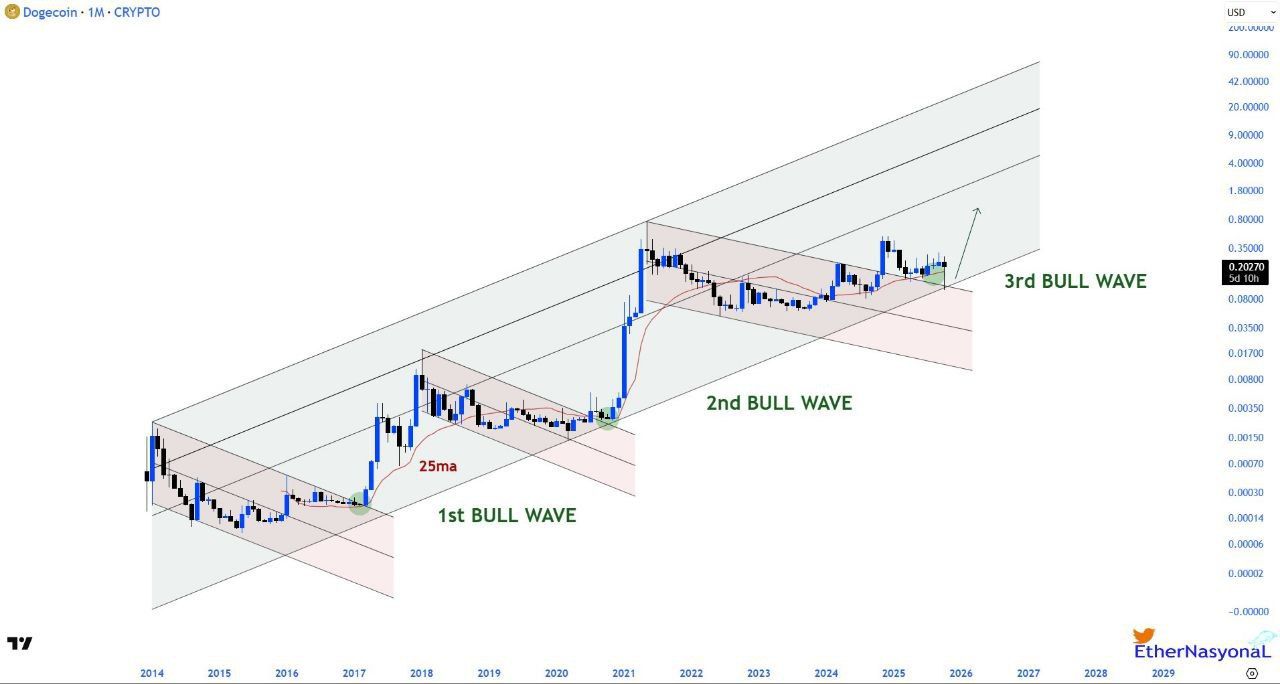
A fresh soft-fork concept billed as a “temporary” fix for non-monetary data on Bitcoin has ignited one of the sharpest developer rows since the blocksize wars, with critics decrying the move as censorship theater—and, more explosively, as an attempt to force changes under the specter of legal liability. The proposal —submitted on Oct. 24, 2025, to the Bitcoin Improvement Proposals (BIPs) repository as “Reduced Data Temporary Softfork”—seeks to “temporarily limit arbitrary data at the consensus level.” Authored by contributor “dathonohm,” it explicitly cites an earlier mailing-list idea from longtime developer Luke Dashjr and frames the effort as a short-run measure while longer-term designs are pursued. The pull request was labeled “New BIP,” with discussion organized around two activation paths described as “proactive” and “reactive.” Although many in the debate refer to the document as “BIP-444,” the draft in the repository has not been assigned a number and still appears as “bip-????.mediawiki.” Even so, the conversation quickly escaped the confines of GitHub and the dev mailing list, morphing into a full-blown culture clash on X. An ‘Attack On Bitcoin’? At the core is a claim familiar from the inscription/Ordinals fights of 2023–2024: Bitcoin is “a monetary network,” not “an arbitrary data transfer protocol.” Supporters argue that constraining arbitrary payloads is about protocol purpose, not adjudicating content. In the draft’s discussion, the author stresses that limiting data avoids turning Bitcoin into “a content moderation system,” and contends that permissive data storage risks centralization and stigma if the chain becomes known as a venue for illegal material. “Node operators shouldn’t have to defend hosting arbitrary data just to participate in a monetary network,” one passage reads. The draft also floats a one-year horizon by anchoring the rules to a specific block height. In the PR discussion, a reviewer asked why the document blocks at “987424,” noting that if the intent is “to have it be a year out,” the magic number should be explained in an FAQ because height would drift during debate. The author replied to “see the deployment section,” underscoring that the change is designed to expire. What the change actually does is still being refined in the thread, but the direction is clear: clamp down on overt channels for large data blobs—explicitly OP_RETURN—and close obvious hiding spots in tapscript. One reviewer challenged the scope, noting that if the point were merely OP_RETURN, the draft would not also touch “MAST and OP_IF,” revealing that the specification aims beyond legacy datacarriers to curtail more expressive script paths that can be abused for storage. That breadth—combined with the document’s rhetoric—sparked immediate blowback. “Luke is being very clear that he expects his soft-fork to get adopted due to legal threats ,” said cryptographer Peter Todd. He also amplified a separate line of attack: that the change could perversely create a censorship-based double-spend vector. “BIP-444 creates a ‘C-SCAM’ attack where you use censoring reorgs to double spend,” Todd wrote, echoing BitMEX Research’s warning that a malicious actor could embed illegal content on-chain “to cause a re-org and succeed with their attack,” thereby creating “an economic incentive for onchain CSAM.” Galaxy’s head of research Alex Thorn weighed in even more bluntly: “this is explicitly an attack on bitcoin… however it’s also incredibly stupid.” Long-time Bitcoin developer Matt Corallo summarized the cultural dissonance with acid irony: “Bitcoin devs: ‘we have to be really careful…’ This BIP: ‘YOLO’.” Bitcoin devs: “we have to be really careful when designing forks to ensure there is never even remotely any risk that funds are effectively seized by fork activation. That would set a terrible precedent and risk Bitcoin’s longevity” This BIP: “YOLO” https://t.co/52nc0BlcPR — Matt Corallo (@TheBlueMatt) October 27, 2025 Todd also claimed to have demonstrated the futility of the approach. “Done with a decade old script that doesn’t even use segwit, let alone taproot… 100% standard and fully compatible with [Luke Dashjr’s] BIP-444,” he wrote alongside a transaction said to contain the entire text of the proposed BIP. Done with a decade old script that doesn’t even use segwit, let alone taproot. 100% standard and fully compatible with @LukeDashjr ‘s BIP-444. https://t.co/Ab7t82KYrk — Peter Todd (@peterktodd) October 26, 2025 The episode underscores a technical reality the draft itself acknowledges: there will “always be ways to hide data,” which is precisely why the author frames the goal as raising costs, eliminating overt lanes, and—crucially—signaling that large unencrypted files are not a supported use case, thereby “minimizing legal liability for users who run nodes.” If adopted, the proposal would have immediate implications for protocols that piggyback on witness/script space for non-monetary payloads— Ordinals-style inscriptions foremost among them—at least for the lifetime of the temporary fork. Critics counter that treating such activity as “abuse” is a normative move masquerading as neutrality, and that activating even a temporary fork which can strand funds or encourage censoring reorgs destroys a hard-won norm: forks must never set a precedent where funds can be effectively seized or transactions retroactively delegitimized. At press time, BTC traded at $115,743.
Bitcoinist
You can visit the page to read the article.
Source: Bitcoinist
Disclaimer: The opinion expressed here is not investment advice – it is provided for informational purposes only. It does not necessarily reflect the opinion of BitMaden. Every investment and all trading involves risk, so you should always perform your own research prior to making decisions. We do not recommend investing money you cannot afford to lose.
Trump Crypto Funding Speculation Boosts XRP and USDT Interest in Politics

Trump crypto funding refers to reports of major cryptocurrency firms like Ripple, Coinbase, and Tether contributing to a $300 million privately funded White House ballroom project under President Trump. This Bitcoinist

BlackRock to JPMorgan: Finance Giants Rally Behind Ripple Swell
Ripple Swell 2025 Lineup Brings Together Global Financial Powerhouses Ripple’s Swell 2025, set for November 4–5, is positioning itself as a defining fintech event, drawing global titans like BlackRock, JPMorgan, Nasdaq, DBS Bank, MasterCard, Citi, Franklin Templeton, Fidelity, BNY and CME Group. Their involvement highlights accelerating institutional adoption of blockchain, the transformation of cross-border payments, and the expanding role of digital assets in the global financial system. Held annually, Ripple Swell serves as a premier gathering for policymakers, financial leaders, and innovators to explore how blockchain can redefine finance. This year’s lineup signals a major step forward in legitimizing blockchain adoption across traditional financial systems, and positions Ripple as a key bridge between legacy institutions and the new digital economy. BlackRock’s involvement reflects the world’s largest asset manager’s continued exploration of tokenization and on-chain finance. As the firm pushes into digital asset ETFs and blockchain-based infrastructure, its presence at Swell hints at a deepening conversation around institutional liquidity and digital asset integration. Meanwhile, JPMorgan and Nasdaq bring institutional credibility from the banking and exchange sectors. Both have been early movers in blockchain research, from JPMorgan’s Onyx blockchain division to Nasdaq’s digital custody solutions. Their participation suggests a shift toward interoperability and real-world blockchain applications at scale. DBS Bank, one of Asia’s leading financial innovators, represents the growing momentum from the East, having already launched digital asset trading and custody services. MasterCard, with its expanding crypto partnerships and payment network integrations, adds a strong layer of fintech expertise. CME Group, known for its Bitcoin and Ethereum futures markets, rounds out the list, highlighting the convergence of traditional derivatives and crypto markets. What does this mean? Well, the inclusion of such powerhouse names emphasizes Ripple’s strategic positioning as more than just a payments firm, but a global infrastructure provider at the forefront of financial transformation. With regulatory clarity improving and institutional adoption accelerating, Swell 2025 could mark a pivotal inflection point for Ripple and the broader blockchain industry. As Ripple continues to expand its influence beyond remittances into liquidity management, tokenization, and CBDC development, this year’s Swell lineup demonstrates a clear message: the world’s largest financial players are no longer watching blockchain from the sidelines, they’re stepping onto the field. Conclusion Ripple Swell 2025 isn’t just another conference, it’s a defining moment signaling that the future of finance is being built now. With BlackRock, JPMorgan, Nasdaq, MasterCard, CME Group, and DBS Bank on the lineup, it marks a decisive shift from blockchain experimentation to large-scale institutional adoption. Bitcoinist











